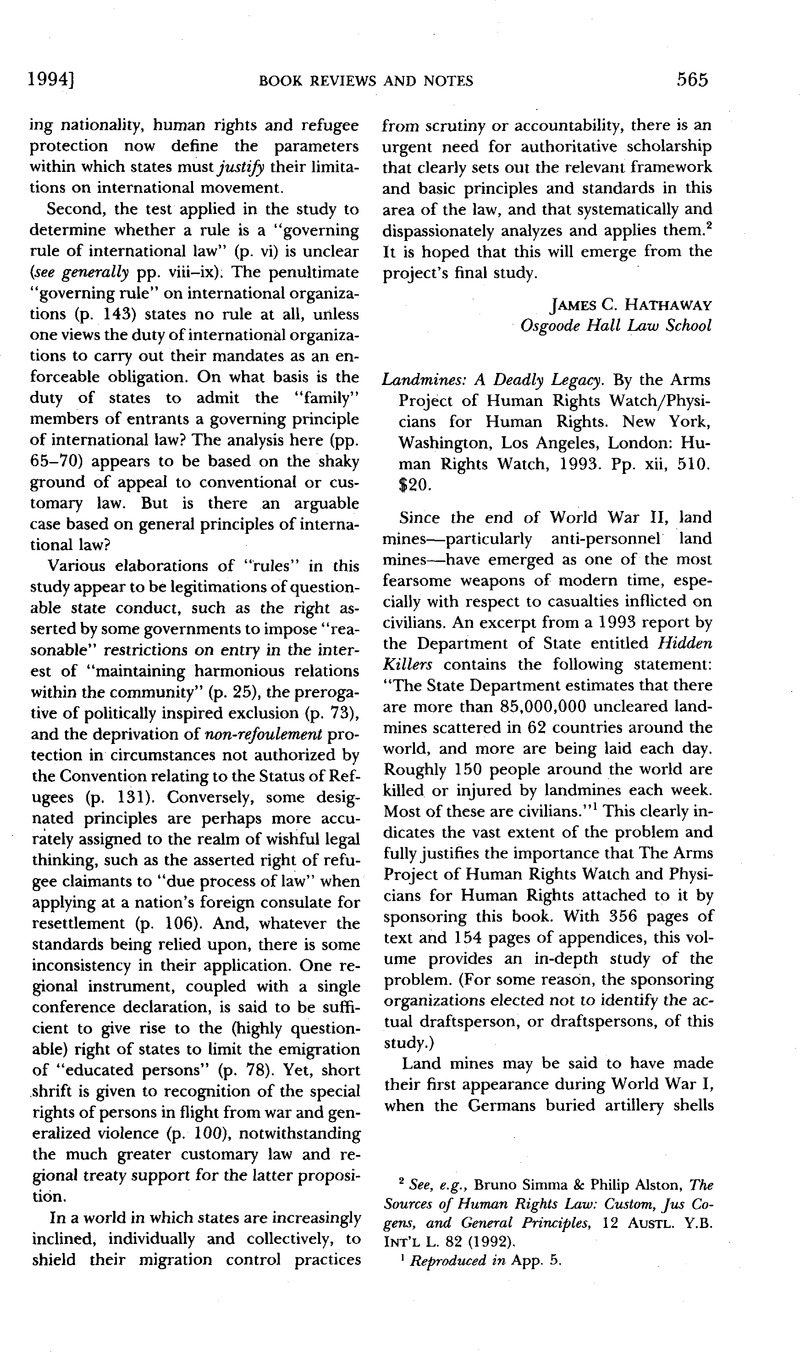No CrossRef data available.
Published online by Cambridge University Press: 27 February 2017

1 Reproduced in App. 5.
2 A chart of “Known Producers” and “Known Producers and Exporters” of antipersonnel land mines is provided on pages 30–31.
3 Sections 1364–1365, Pub. L. No. 102-484, 106 Stat. 2561 (1992), approved Oct. 23, 1992, reproduced as App. 7. The moratorium was extended to a total of four years by Pub. L. No. 103-160, §1423, 107 Stat. 1557, 1831 (1993).
4 19 ILM 1524 (1980); The Laws of Armed Conflicts 179 (Dietrich Schindler & Jiří Toman eds., 3d rev. ed. 1988).
5 The discrepancy between this figure and the U.S. Department of State’s 85 million (supra note 1) reflects the necessarily “ballpark” estimates of land mines now in place; at least an equal number are estimated to be stockpiled around the world, waiting to be emplaced.